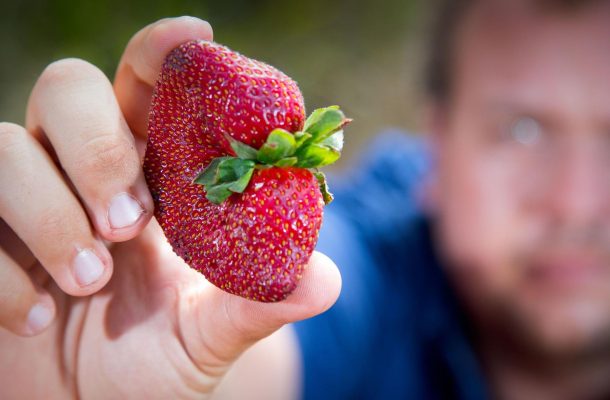Getting real on the strawberry needle risk

Australia’s strawberry needle scare has wreaked havoc with the industry and driven Prime Minister Scott Morrison to increase penalties for food sabotage to scare off copy cats. But what is the actual likelihood of biting into a sewing needle nefariously inserted into your strawberry?
On some rough back-of-the-envelope calculations, and some reasonable assumptions, it’s in the order of a 1 in 40,000 chance that your punnet would be spiked. That is assuming some hundred reported cases of sabotaged punnets in a five-day period are all accurate, against the 800,000 punnets produced daily.
The chances then are very, very low.
Why, then, have so many of us shunned strawberries altogether? As a whole the community has assessed this risk and decided it’s unacceptable.
So what is driving this decision making, when driving a car is far riskier than eating a strawberry, and yet we don’t reconsider getting behind the wheel?
It’s all about perceptions
Personal perception of risk is a key element in the way we make decisions. And these perceptions can vary between people. We rely on decision making shortcuts, like common sense, to make these assessments.
Scientists call these short cuts heuristics, but they leave us open to a number of biases.
The key one to note in this case is that of availability bias – the easier it is to imagine a potential event in your mind, especially one evoking dread, the riskier it is perceived to be. This is especially true when a lot of attention has been paid to a hazard, as we have seen with the prominent coverage of the strawberry scare in the media.
However, people tend to make decisions based on their perception of risk, not the actual likelihood of an event occurring. The perception of risk can be related to a number of varied factors including the level of knowledge of the risk, your ability to control it, how fair or indiscriminate the risk is and, of course, the feelings of dread evoked when imagining the risk.
Many of these psychological factors come together to form your ultimate risk perception. And this may be different for each person.
For example, in the case of the car, a frequent driver is likely to feel a high level of control and confidence that comes from the feeling of familiarity with driving. When a regular driver thinks of the action of driving, they tend to remember the day-to-day experiences they have had, which mostly don’t result in mishap or worse. Therefore, their sense of dread is low.
But if they are repeatedly faced with harrowing images of car crashes on their media feed, or have witnessed or been involved in an accident, their personal affiliation with the risk may change for the worse, even though the chance of being in an accident may not have shifted.
Strawberries with needles poking out of them are being plastered all over front pages, in media reports and on social media feeds. Psychologically, the likely result of this is to heighten your risk perception well beyond the actual probability of receiving a spiked strawberry.
So before you walk past that strawberry stand, consider why it is you may have the risk perception you have, and compare this up against the actual chance of receiving a contaminated strawberry.
This is the first step in understanding the problem, and in turn helping the industry recover.
Ms Kosovac’s PhD research focuses on risk perceptions in the water industry and how this affects decision making. The research explores both the psychological and cultural elements of risk to shed light on current practices.
This article was published by Pursuit.
Anna Kosovac is a PhD Candidate with a Masters in International Relations, and a Bachelor of Engineering (Civil) from the University of Melbourne. She has a keen interest in women’s equity in the field of STEM.










